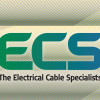For those of us who are not professional writers but who must nevertheless write convincingly, anything that improves our expression in language is worth a look. Here’s one that is remarkably powerful:
Using a great typeface when you write, especially one that suits your own personality, is a portal to better writing!
Visual designers everywhere know typography is a powerful tool for building excitement, creating award winning design, and translating business strategy into results. But even before the graphic design stage, just using a great font during your writing process helps you enjoy the process—and clarify what you are trying to say.
“What?” you say, “Most of the world doesn’t know the Comic Sans typeface from Caslon.”
True! Subtlety is precisely what gives typography its power. It flies below the radar of suspicion. Like the soothing tone of a great radio voice, a great typeface makes writing come more easily and friendly to the eye.
You might scoff: ‘Surely this a graphic designer’s fantasy exaggeration!’
Fair enough, but try it and see!
The Visual Writing strategy is simple- find a beautiful text type and write in it as your default. Many world renowned brands use a consistent typography as part of their brand strategy. The New Yorker’s quirky headlines are an example. UPS has adopted the modern classic DAX. Apple has for many years used its own customized “Apple Garamond”. We read everywhere about having a “personal brand” but very few solo entrepreneurs have learned what the major brands all know.
OK, you don’t have an idea where to start? Here is Dr. Dave’s list of five inspiring typefaces that will change the way your words ‘sound’ on the page. It’s very visceral, not every style works for everybody, these 5 are just to give you the flavor. You may have to hunt a bit to get the one that sets your prose ablaze. But it’s out there!

I start with my own personal favorite, Deepdene. It’s the master work of one of the greatest type designers of all time, Frederick Goudy. The roman version is very easy to read, and it has IMHO the prettiest italic ever created. The italic is too spirited to use for long form writing, but writing a key sentence in Deepdene Italic is pure poetry.



>>I would not set a whole book in Titillium. But it’sexcellent for web and mobile, and for setting newsletters, blogs and marketing materials. And for a writer, it’s a turbo boost to your relevance.
Processing, please don’t wait!
What I want to emphasize here is the process, not the product. I am not suggesting you write your prose in the same old nothing typeface that comes with your computer, then later converting it to a special face. I’m saying, start with a face that makes your heart sing, and write in that face—just as you naturally speak in your own voice. Your friends instantly know your speaking voice when they hear you on the phone or in person. Your typeface does the same thing for you in your writing. Even if your writing is presented to the world in some other typeface, the font in which you write can make you a better writer. Try this and see it transform your writing. Honest!

A beautiful type for coaxing your thoughts onto the page is Centaur. Designed by Bruce Rogers for the Oxford Lecturn Bible (gets my vote as one of the most beautifully produced books of all time) Centaur is approaching its centenary but still both exceptionally legible and delightful to read. It is hampered a bit by the lack of a native italic (usually paired with Arighi for italic) it is still wonderful. When I write in Centaur, I feel the timeless authority of a beloved old college professor.

5) The Writing on The Wall
Rounding out my top 5, a fairly widely available typeface family that represents a timeless achievement—a fusion of classical and modern, is Herman Zapf’s Optima. Anyone who has visited the Viet Nam Veterans memorial (“The Wall”) in Washington DC, has seen Optima listing the names of the fallen heros.

It is both an experience of dignity, mourning, but also, one of transcendence and strength. But writing in its lower case alphabet lends an optimism and agility to your prose not available in any other way.
If you’re ready to try it, there are lots of good places to purchase font licenses—I like www.philsfonts.com, but just google “purchase bodoni font”, or which ever one you like, and find your best price.
The web is crowded with sites where one can download free fonts. I don’t recommend free fonts. You know the saying “If you’re not paying for the product, you are the product.” Too often free fonts are a magnet for viruses and worms entering your system. Better to try out a few sentences at a site like Wordmark.it then purchase and install a license for the font on your system. (For instructions on how to install a font on your Windows system, go here. For installing fonts on your Mac, go here. Using Linux? Go here. ) Note- you sometimes have to search a bit—this is why I suggest enlisting the help of someone who breathes typefaces all day long to help you zero in. It will cost from $30 to $50 to buy the license to the font you select—I recommend getting at least 4 fonts – regular, italic, bold and bold italic— but the investment will pay you back in both more fun writing and more persuasive voice to your reading public.
Oh, I almost forgot to tell you a crucial part of Dr. Dave’s Face the Music strategy: Write large! I write in Deepdene, 16 point type, and 1.5 line spaces. Sure it will run more pages, but you can always knock it back to 12 point later. Writing large allows you to see your thoughts emerge in big, clear, beautiful letters. If you sometimes get hot and write fast with your eyes closed—professionals and SPROW’s alike do this—when you open your eyes, the clarity of the letters somehow makes it easier to separate the brilliance from the bullshit.
So, SPROWs of the world, add a bespoke typestyle to your writer’s arsenal, go forth and sparkle!
If you take this to heart and Face the Music we would all love to hear from you about which typeface you find to be your own true voice!


 David Laufer is Managing Partner of
David Laufer is Managing Partner of 

